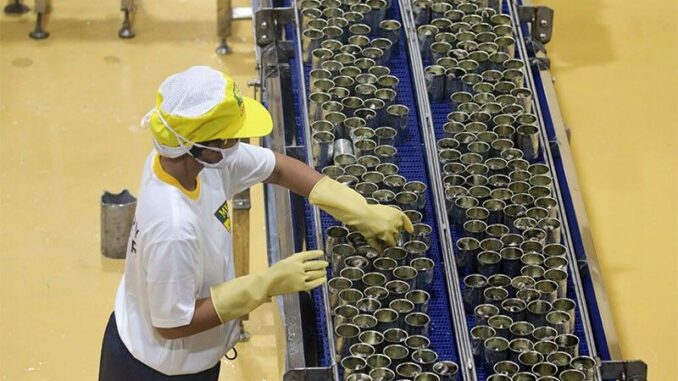
MANILA, Philippines — The country’s factory output growth slowed sharply in August as the production of food, electronics and petroleum products posted smaller gains, according to the Philippine Statistics Authority (PSA).
Preliminary results of the PSA’s Monthly Integrated Survey of Selected Industries showed the Volume of Production Index (VoPI) for manufacturing in August posted a growth rate of 2.8 percent, slower than the 6.8-percent increase in July this year and the 5.6-percent uptick in August 2023.
This brings the average VoPI growth from January to August to 1.7 percent.
The PSA attributed the deceleration in VoPI growth in August primarily to the lower increases in the manufacture of food, computer and electronic products and petroleum products.
In particular, the manufacture of food products registered a slower 0.6-percent increment in August from a double-digit increase of 13.1 percent in July.
The production of computer, electronic and optical products also posted a slower increase of 4.2 percent in August from the previous month’s 13.2-percent uptick.
Manufacture of coke and refined petroleum products grew by 15.5 percent in August, slower than the 20.4-percent increase in July.
Based on responding establishments, the PSA said the average capacity utilization rate for manufacturing in August was reported at 75.5 percent, down from the previous month’s 75.7 percent, but higher than the 74 percent recorded in August last year.
“All industry divisions reported capacity utilization rates of more than 60 percent during the month,” the PSA said.
Industry divisions with the highest reported capacity utilization rate were textiles (82.2 percent), other non-metallic mineral products (82 percent) and machinery and equipment except electrical (82 percent).
The PSA also said 28.9 percent of responding establishments operated at full capacity (90 percent to 100 percent).
Meanwhile, 41.1 percent operated at 70 to 89 percent capacity and 30 percent were running below 70 percent capacity.


Be the first to comment